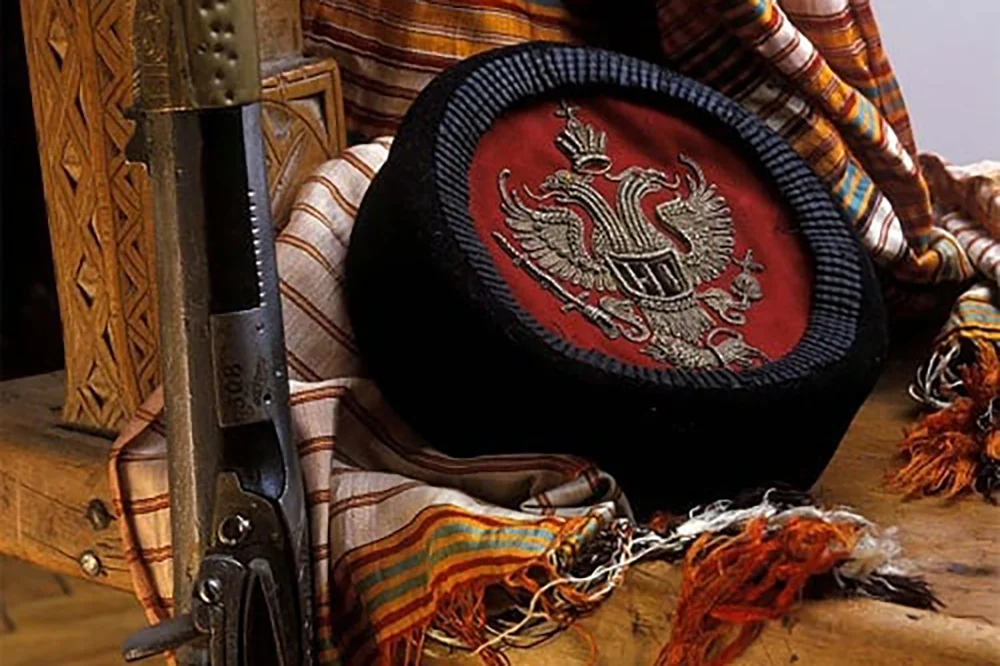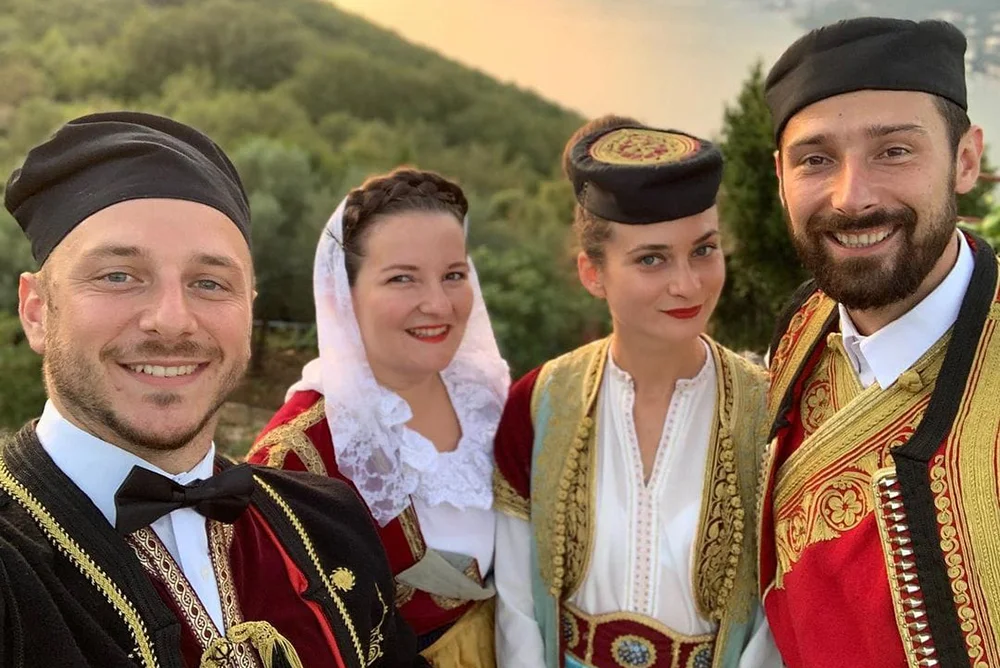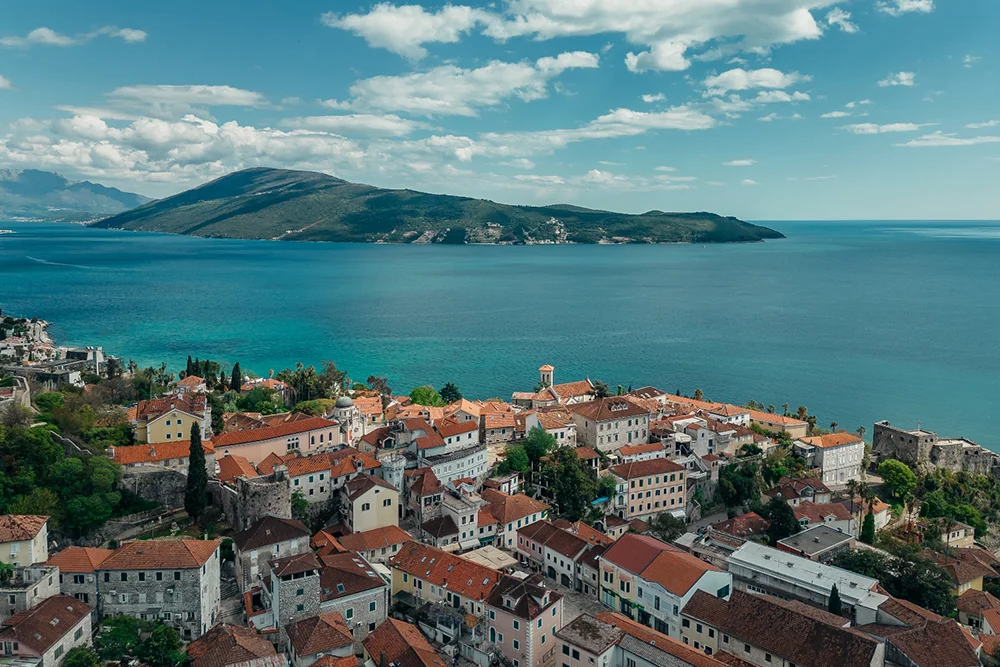Montenegro is a land of breathtaking landscapes and deep-rooted traditions. Its rich cultural heritage reflects its history and identity - one of the most distinctive aspects of this heritage is traditional costume, a symbol of national pride and artistic expression. During the 19th and first half of the 20th century, a large number of folk costumes were used on the territory of today’s Montenegro. Intricate embroidery, beautiful colors, and unique designs of these garments tell stories of Montenegro’s past and the coexistence of its ethnically and religiously diverse population. These costumes were not only clothes – they were a representation of social status, ethnicity, and religion, as well as regional identity.
Regional Variations of the Montenegrin Traditional Costume
Photo credit: my guide Montenegro
The diversity of Montenegrin traditional costume stems from geographical and historical influences. It is generally divided into two main cultural zones:
There are no clear-cut borders between these zones, but certain distinctive features—reflected in color, decorative elements, and tailoring—make each style recognizable.
1. The Typical Elements of Traditional Festive Montenegrin Costume

Photo credit: Montenegro.travel
Traditional Montenegrin costume is a striking representation of the country’s heritage, characterized by fine craftsmanship with details that carry their own meaning.
Dolama – A tailored jacket, often embroidered with gold or silver threads, signifying prestige and elegance.
Čakšire – Usually dark-colored trousers, worn with a belt or sash.
Jelek – A richly decorated vest worn over the dolama or džamandan.
Gunj – A long jacket worn over the džamandan, usually light green in color.
Dušanka – Worn over gunj, it added to the complexity of the Montenegrin costume.
Kapa – The iconic Montenegrin hat, typically black with a red top, often with gold embroidery, symbolizing the country’s history and resilience.
Opanci - Traditional Montenegrin leather shoes.
Weapons – Swords, jatagans (a type of knife), and pistols were a part of men’s costume as a symbol of honor and social status.
Shirt – Often made of silk or cotton, with long wide sleeves and embroidery around the neck.
Dolaktica or jaketa – A short jacket made of velvet, worn over the shirt, most often oxblood in color, sometimes purple or dark blue.
Skirt – Usually made of silk, in two parts, ankle-long and in one color – dark red.
Apron (futo) – Rectangular in shape or with a rounded lower part, it was worn over the skirt, often made of silk or cotton.
Ćemer - A heavy belt usually decorated with silver filigrees and colored rocks.
Opanci - Traditional leather shoes.
Jewelry – A part of women’s costume, it consisted of silver or gold filigree, necklaces, and decorative pins.
All garments were made from high-quality materials such as wool, silk, and cotton, ensuring durability and beauty. The embroidery and patterns are deeply symbolic, with motifs representing prosperity, protection, and heritage.
2. The History and Evolution of Montenegrin Clothing

Photo credit: Montenegro.travel
The origins of Montenegrin traditional attire date back centuries, influenced by historical events, trade, and cultural exchanges. Over time, external influences from the Ottoman Empire, Venice, and neighboring Balkan regions contributed to the distinct style seen today.
Traditional clothing played a vital role in daily life, as well as in significant ceremonies and festivals. From wedding garments adorned with gold embroidery to warrior attire symbolizing strength, these clothes have long been a marker of Montenegrin identity.
Since the middle of the 20th century, traditional costumes have gradually faded out of everyday use, but their value is still preserved today through museums and cultural exhibitions, folklore festivals, and contemporary adaptations.
3. The Symbolism of Traditional Costume

Photo credit: my guide Montenegro
Beyond aesthetics, Montenegrin traditional costume carries profound symbolic meanings:
4. Traditional Clothing in Modern Montenegro

Photo credit: Montenegro.travel
Montenegro’s traditional clothing is more than just attire; it is a reflection of the country’s soul. Whether seen at a festival, worn in a dance performance, or reimagined in contemporary fashion, it continues to be a symbol of pride and heritage; it is celebrated and preserved. While it is no longer part of everyday wear, it remains an essential feature of national festivals and important cultural events, and some couples choose it as their wedding attire.
Modern designers have also found inspiration in these traditional garments, incorporating elements such as embroidery and fabric patterns into contemporary fashion. This fusion of old and new ensures that Montenegro’s rich heritage remains relevant in the present day.
5. Where to Experience Montenegrin Culture

For those eager to witness Montenegro’s cultural heritage firsthand, Portonovi offers an immersive experience. Visitors can explore:
6. Explore Montenegro’s Culture in Portonovi

Portonovi beautifully blends Montenegro’s rich history with modern luxury, making it the perfect destination for exploration. From events throughout the year to curated tours, this is a perfect starting point to discover the best of Montenegro.
Visit Portonovi and discover the essence of Montenegro. Take a look at the Portonovi rental offer and plan your trip.
Have you ever thought about swapping city life for coastal living in a small country? In Montenegro, mornings start with salty air drifting through your window and end with sunsets over mountains that touch the water. It’s the kind of place where natural beauty and a balanced, feel-good way of living go hand in hand.
Nestled in the heart of Durmitor National Park, Žabljak is a charming mountain town in northern Montenegro that offers breathtaking views, crisp mountain air, and untouched wilderness.
Located between rugged mountains and the sparkling Adriatic Sea, Montenegro is a small country, but don’t let that lead you to the wrong track. Its name, meaning “Black Mountain,” evokes dramatic natural landscapes, while its charm lies equally in ancient history, Mediterranean culture, and modern luxury.